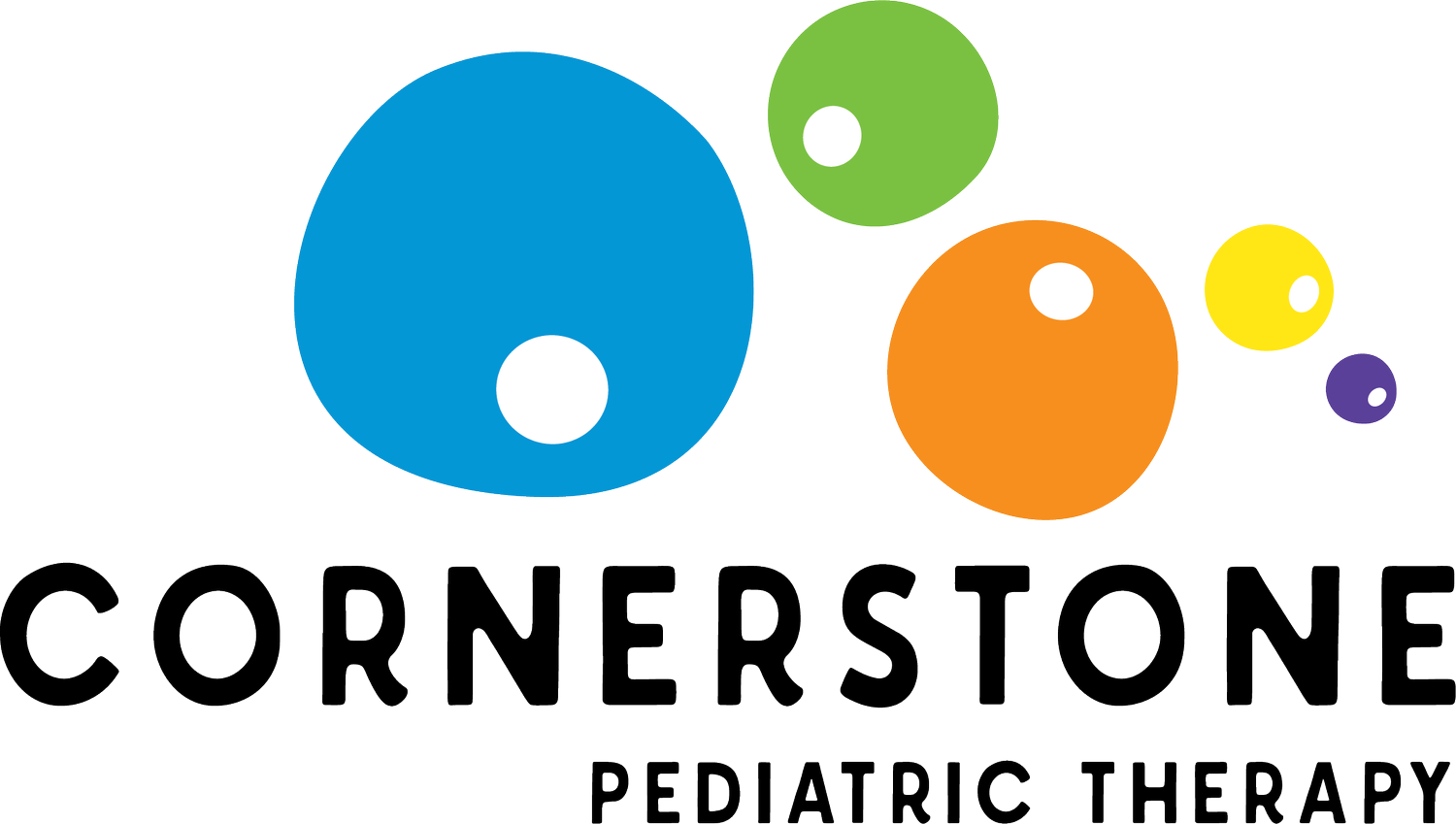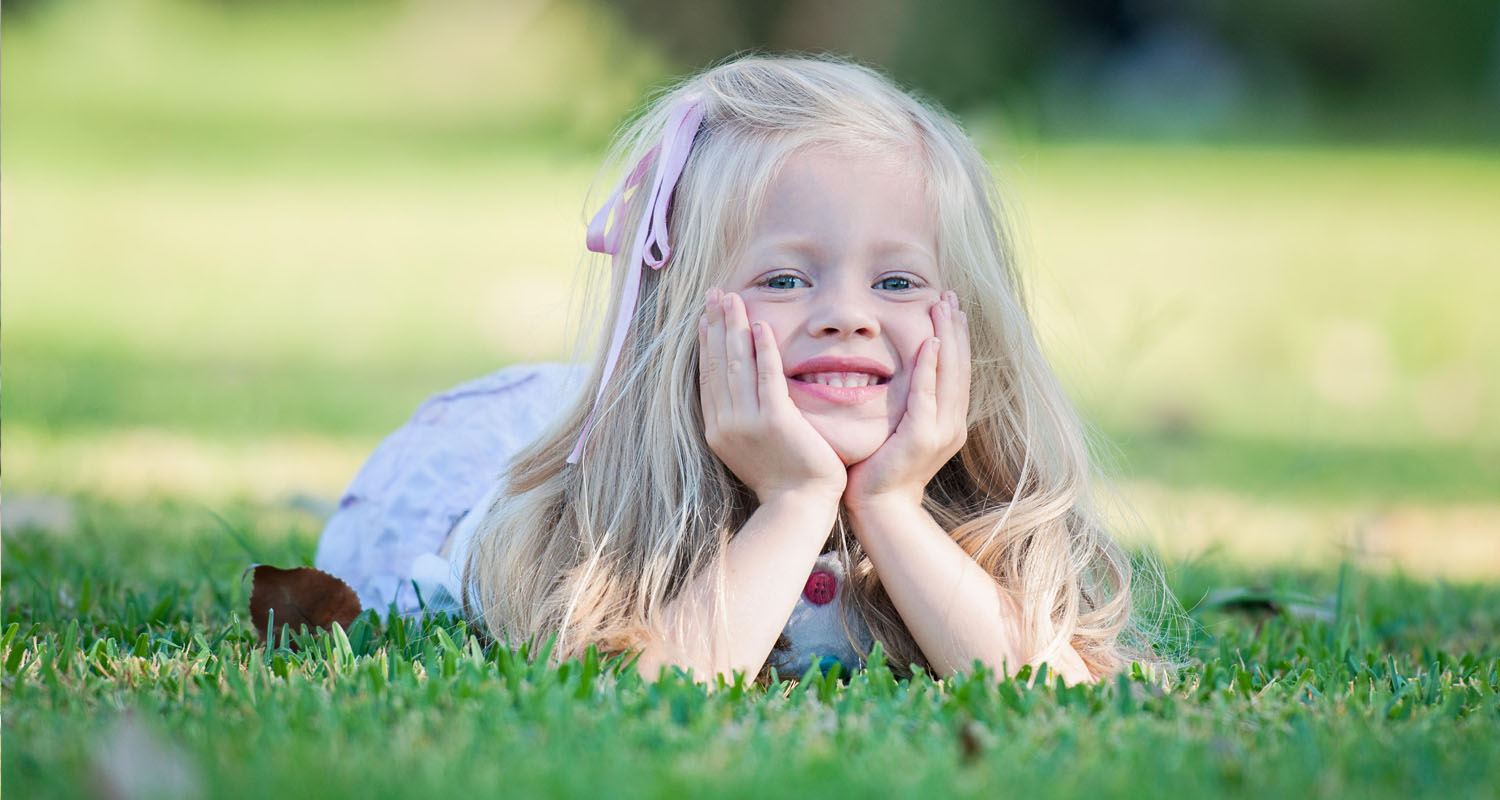DEVELOPMENTAL MILESTONES
select the age below to view list
0 - 3 months
SPEECH & LANGUAGE
• Coos and makes pleasure sounds
• Turns head/reacts to loud noises
• Calms down/smiles when spoken to
PHYSICAL
• Holds head up
• Begins to push and lifts/turns head when lying on stomach
• Movements begin to become more purposeful (although they are generally large jerky movements)
• Begins to bring hands to mouth
• Wiggles, kicks with arms and legs
OCCUPATIONAL
• Brings hands to mouth
• Takes breast or bottle with ease
• Follows a face
• Looks and smiles at faces
• Looks back and forth between two objects
• Becomes quiet when comforted
• Tolerates supervised "tummy time" when awake for at least 10 minutes (3 times per day)
FEEDING
• Displays reflexes to protect airway (coughing, clearing of throat)
• Responds to stimulation around the mouth
• Consumes breast milk or formula through a nipple
• Breathes smoothly while feeding (2-3 sips of liquid before swallowing and breathing)
4 - 6 months
SPEECH & LANGUAGE
• Follows sounds with his/her eyes
• Responds to changes in tone of voice
• Recognizes toys that make noises
• Reacts to music
• Babbles in a speech like way - using sounds that begin with "P", "B", and "M"
• Babbles or laughs when excited
PHYSICAL
• Reaches and swipes for objects of interest
• Begins to play with hands and toys at midline
• Puts weight on hands and to lift head and chest when laying on his/her stomach
• Holds head steady and upright without support
• Rolls over from stomach to back and back to stomach
OCCUPATIONAL
• Begins to play with hands and feet
• Begins to voluntarily grasp toys and objects
• Looks at and reaches for toys
• Transfers toys between hands
• Intentionally drops an object and watches it fall
• Tracks moving objects
• Attempts to grasp a bottle
FEEDING
• Grasps bottle with both hands with little assistance
• Begins to consume pureed fruit and vegetables
6 months - 12 months
SPEECH & LANGUAGE
• Reacts to and enjoys games like peek-a-boo
• Turns and looks in the direction of sounds
• Listens when spoken to
Understands common words such as "cup" or "juice"
• Responds to requests such as "come here"
• Babbles to get and keep attention using long and short groups of sounds
• Has one or two words such as "Hi", "Mama", or "Dada" by first birthday
PHYSICAL
• Pivots on stomach
• Pulls up to hands and knees
• Sits up without assistance
• Uses both hands together during play
• Begins to move forward on hands and knees
• Pulls up to standing position with some support
• Begins to walk without support
• Begins to take small, independent steps
OCCUPATIONAL
• Begins to poke at objects with index finger
• Holds objects/toys in each hand and uses both hands to play
• Grasps objects with thumb and index finger
• Drops and picks up toys/objects
• Shows preference for certain toys, activities, or places
• Supports him/herself on hands and knees
• Begins to use utensils (spoons, forks)
• Begins to hold a cup with both hands
• Expresses affection
FEEDING
• Feeds him/herself finger foods
• Holds bottle independently
• Begins to use utensils
• Begins to consume pureed meat and baby foods
1 - 2 years
SPEECH & LANGUAGE
• Follows simple commands
• Enjoys and responds to simple stories, songs, and rhymes
• Points to pictures (when named) in books
• Acquires new words regularly
• Uses basic one or two-word questions
• Begins putting words together
PHYSICAL
• Walks without support
• Sideways and backwards movement begins
• Pulls up to standing without support
• Crawls up and down stairs
• Begins to stack objects on top of each other
• Puts objects in and takes objects out of containers
• Pulls objects apart (such as blocks or beads)
OCCUPATIONAL
• Sits and plays with toys using both hands easily
• Stacks blocks easily
• Begins to put small objects into containers
• Scribbles
• Begins to play alone
• Removes socks and helps to put on pants and shirt
• Turns pages of a book
• Draws lines on paper
• Begins to imitate peers and adults (simple activities)
• Begins to put simple puzzle pieces together
FEEDING
• Learns to eat with a utensil and drink from a cup
• Displays lip closure when swallowing liquids and soft solids
• Begins to drink liquids from a sippy cup
• Begins to consume mashed table foods
• Attempts to hold the handle of a sippy cup independently
• Begins to drink from a straw
2 - 3 years
SPEECH & LANGUAGE
• Uses two or three-word phrases to talk about and ask for things
• Begins using “K”, “G”, “F”, “T”, and “D” sounds
• Speech is understandable by family members
• Identifies objects by name to ask for, or direct attention to them
PHYSICAL
• Walks, runs, stops, steps up and squats down
• Walks up stairs, with support, using an alternating foot pattern
• Stands on one leg (1-3 seconds)
• Jumps in place
• Kicks a ball (3-6 feet)
• Tosses a ball (underhanded)Begins to learn to catch a ball from short distances
OCCUPATIONAL
• Learns to string beads together
• Builds things with blocks
• Plays with toys for extended periods of time
• Engages in simple group activities
• Defends his/her possessions
• Opens doors by turning the handle/knob
• Begins to draw lines and circles
• Begins to show interest in toilet training
• Matches simple shapes such as square, circle, and triangle
FEEDING
• Coordinates sucking, swallowing, and breathing patterns for longer periods
• Eats finely chopped table foods
• Bites through crunchy food items (crackers and cookies)
• Begins moving food from side to side of the mouth while chewing
3 - 4 years
SPEECH & LANGUAGE
• Hears and responds when called from another room
• Answers simple questions such as “who”, “what”, “where” and “why”
• Talks about daily activities
• Composes sentences consisting of 4 or more words
• Speaks easily without repeating syllables or words
PHYSICAL
• Maneuvers basic obstacles
• Stands on one leg (3-5 seconds)
• Walks on a line without stepping off
• Hops on one foot
• Jumps forward, down and over objects with feet together
• Tosses a ball both overhanded and underhanded
OCCUPATIONAL
• Catches a medium sized ball
• Throws ball over and underhanded
• Begins to draw simple shapes
• Cuts paper
• Interacts with peers (sharing and taking turns)
• Begins dramatic play
• Pours from a small pitcher
• Buttons and unbuttons large buttons
• Washes his/her own hands
• Dresses him/herself with supervision
• Begins to attempt to brush teeth independently
4 - 5 years
SPEECH & LANGUAGE
• Pays attention to and answers questions about simple short stories
• Hears and comprehends most of what is said at home and in school environment
• Gives details in sentences
• Communicates easily with adults and children
• Uses correct pronunciation for most sounds except for ones such as “S”, “R” and “TH”
• Begins using rhyming words
• Begins to name some letters and numbers
PHYSICAL
• Stands on one foot (up to 10 seconds)
• Hops forward on one foot 5 times
• Walks on straight line backwards
• Gallops and skips forward
• Walks up and down stairs, without support, using an alternating foot pattern
• Catches a tennis ball
OCCUPATIONAL
• Cuts paper on a line
• Begins to learn to write his/her name
• Plays and interacts with peers easily
• Begins to imitate more advanced grown up activities
• Buckles shoes (Velcro) or belt
• Zips a zipper without support
• Uses the toilet independently
• Puts on socks and shoes (with help tying shoes)
5 - 6 years
SPEECH & LANGUAGE
• Uses adult like speech
• Has conversations of up to 12 turns
• Responds to indirect questions
• Pronounces sounds correctly except for ones such as “S”, “Z”, “R” and “TH”
PHYSICAL
• Maintains balance and rhythm while skipping
• Hops forward on one foot for 20 feet without losing balance
• Jumps rope
• Walks on a balance beam
• Jumps over small hurdles and objects (10 inches high)Jumps sideways, back and forth
OCCUPATIONAL
• Cuts out simple shapes
• Learns to write the alphabet
• Colors within lines
• Grasps pencil with thumb and index finger
• Establishes a dominant hand
• Plays simple and competitive games with peers
• Dresses independently
• Brushes teeth independently
REFERRALS
We appreciate your referrals!
In order to refer a patient to Cornerstone Pediatric Therapy, please click on the referral form below. This will open Cornerstone's referral form in a PDF document format which you can then print out and complete. Please fax the completed referral form to us at: (972) 237-0101 or email it to us at: referrals@cornerstonepediatric.com
Thank you for making Cornerstone your trusted source for pediatric therapy!
FAQs
Below is a list of Frequently Asked Questions that we have come across throughout our many years of providing pediatric home health therapy. If your question is not listed below, please feel free to contact our office at (972) 237-0100.
Q: If my child is referred by his/her physician for therapy, how long can I expect to wait before my child starts receiving services?
A: One of our goals at Cornerstone is to get your child’s treatment started as soon as possible. However, different types of Medicaid have different requirements to complete the intake process, which may take anywhere from 2-4 weeks (including evaluation). You are welcome to call our office and inquire regarding the status of your child’s paperwork.
Q: How long does a therapy session last and for how many months?
A: A therapy session typically lasts 30 minutes (duration), but this can vary based on patient needs. Sessions are typically given twice a week or 9 times a month (frequency) per Medicaid authorization. There are variations of frequency, determined by Medicaid during the authorization process.
Q: If I don’t think the frequency was adequate and believe my child requires more therapy, can this be requested?
A: Yes, however before your child’s authorization expires we will do a re-evaluation or submit notes to Medicaid for extended treatment if necessary. The therapist may also write an appeal if Medicaid denies extended treatment and the therapist deems it necessary.
Q: Our primary language in the home is Spanish; are bilingual therapists available?
A: We have bilingual therapists throughout the DFW Metroplex. If we cannot provide one immediately, an interpreter will be assigned with your therapist. It’s important to us that our patients and their families feel comfortable speaking in their own language, and be able to address questions and concerns as needed.
Q: Do your therapists perform TeleHealth or ‘TeleTherapy’ visits?
A: Yes! We utilize a TeleTherapy platform known as Theraplatform and are able to perform visits via TeleHealth in most cases.
HELPFUL LINKS
fostercaretx.com parklandhmo.org dads.state.tx.us eccnt.org
At Cornerstone, it is our goal to provide parents and therapists with valuable resources. We are listing these additional resources and we are simply acting as a conduit for information which may be beneficial to parents, families, clients, and professionals. Listing these organizations and/or services does not necessarily indicate the endorsement of Cornerstone Pediatric Therapy.


